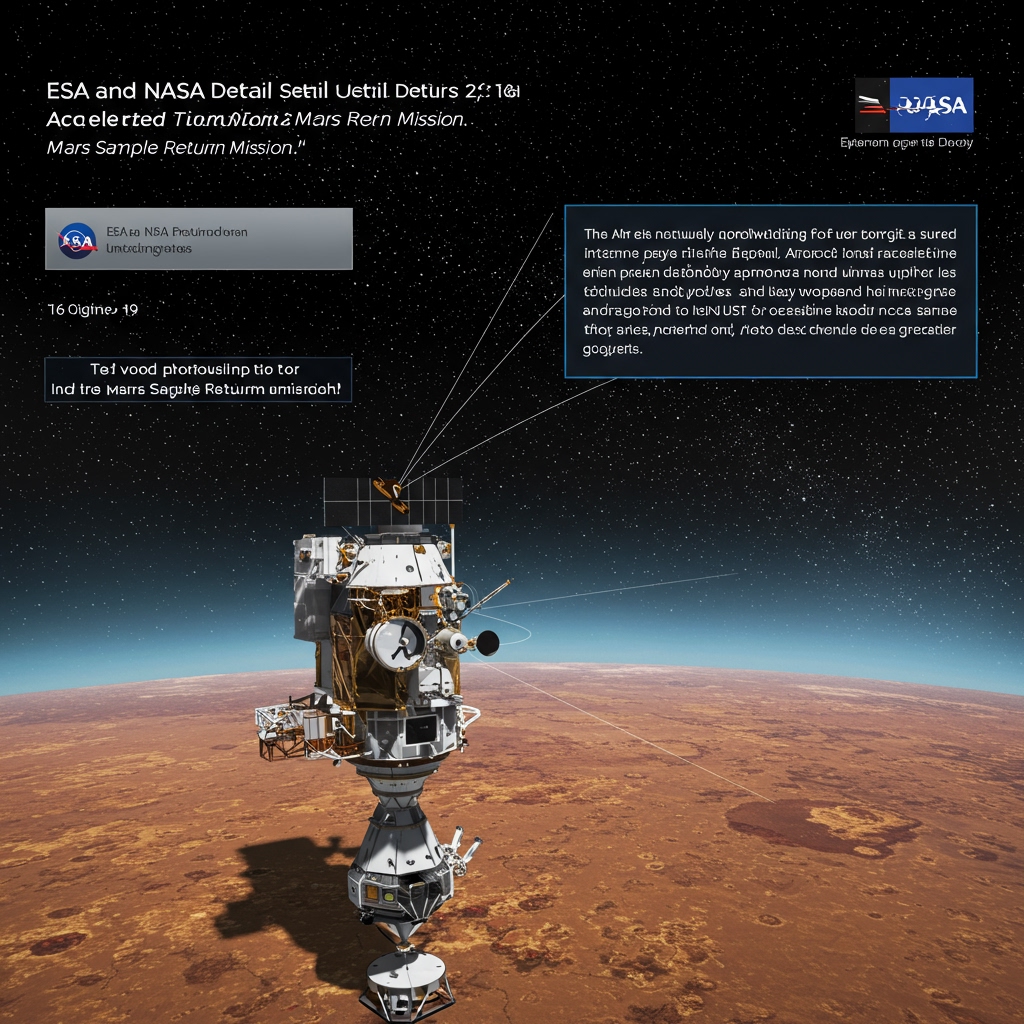ESA and NASA Announce Accelerated Mars Sample Return Plan
In a significant joint announcement, the European Space Agency (ESA) and the National Aeronautics and Space Administration (NASA) have revealed a revised, accelerated plan for the critical next phases of their ambitious Mars Sample Return campaign. This collaborative effort represents one of the most complex and scientifically crucial undertakings in planetary exploration history, aiming to bring pristine geological samples collected from the Martian surface back to Earth for unparalleled laboratory analysis.
Following a comprehensive joint review, conducted by teams from both agencies, a refined strategy has been agreed upon, leading to a more aggressive timeline for key mission elements. The core of the updated plan involves firm commitments to the launch schedules for two pivotal components: the Sample Retrieval Lander and ESA’s Earth Return Orbiter. Under the new timeline, the Sample Retrieval Lander is targeted for launch by late 2027, a crucial step that will carry the hardware necessary to collect the samples left behind by NASA’s Perseverance rover.
ESA’s Earth Return Orbiter, another vital piece of the puzzle designed to rendezvous with a sample container in Mars orbit and transport it back to Earth, is now scheduled for launch in 2029. This coordinated launch schedule is designed to ensure the necessary orbital mechanics and mission phasing are aligned for a successful retrieval and return journey across interplanetary space. This updated strategy is designed to bring the precious samples, currently being meticulously cached by the Perseverance rover in Jezero Crater, back to laboratories on Earth by the early 2030s.
Progress Enables Faster Timeline
The acceleration of the Mars Sample Return timeline is not merely an arbitrary decision but is underpinned by substantial technological progress and increased confidence in the mission architecture. Key technological challenges, which were subjects of intense development and testing, have seen significant breakthroughs. Specifically highlighted areas of progress include the development of the Sample Fetch Rover and the Sample Transfer Arm.
The Sample Fetch Rover, a mobile robotic system developed by ESA, is designed to autonomously traverse the Martian surface, locate and pick up the sample tubes deposited by Perseverance, and deliver them to the Sample Retrieval Lander. Progress on the design, testing, and miniaturization of this sophisticated rover has been instrumental in de-risking this critical mission phase.
Similarly, the Sample Transfer Arm, a robotic arm located on the Sample Retrieval Lander, is essential for manipulating the sample tubes transferred from the Fetch Rover into the ascent vehicle. The development of this arm requires high precision and reliability in the harsh Martian environment. Advances in robotic manipulation, sensing, and software control for the arm have contributed significantly to the agencies’ confidence in an earlier timeline.
A Multi-Segment Mission
The Mars Sample Return campaign is inherently complex, comprising multiple missions working in concert across vast distances. It began with the landing of the Perseverance rover in Jezero Crater in February 2021. Perseverance is not only searching for signs of ancient microbial life but also collecting and caching scientifically compelling rock and regolith samples in sealed tubes.
The next phases, now accelerated, involve the Sample Retrieval Lander, which will carry the ESA-developed Sample Fetch Rover and the NASA-developed Mars Ascent Vehicle (MAV). The Fetch Rover will gather the cached samples and bring them to the Lander. The Sample Transfer Arm on the Lander will then place these samples into the MAV. The MAV will launch the container of samples into Mars orbit.
ESA’s Earth Return Orbiter (ERO) will then play its crucial role. Launching in 2029, it will journey to Mars, rendezvous with the orbiting sample container, capture it, and seal it within a containment system to prevent any potential contamination of Earth. The ERO will then begin its long journey back to Earth, where the sample container will be released for a safe landing and transport to a specialized receiving facility.
Scientific Imperative and Global Collaboration
The primary driver for this ambitious campaign is the unparalleled scientific opportunity presented by bringing Martian samples to Earth. While rovers like Perseverance can perform sophisticated analyses in situ, the full range of cutting-edge laboratory techniques available on Earth cannot be replicated on Mars. Earth-based labs offer vastly more powerful instruments, greater analytical diversity, and the ability to revisit samples with new techniques as technology evolves.
Scientists anticipate that these samples, collected from a region believed to be an ancient lakebed potentially habitable billions of years ago, could provide definitive answers about whether life ever existed on Mars. Beyond astrobiology, the samples will yield critical insights into the geological history, climate evolution, and potential resource availability on the Red Planet.
The collaboration between ESA and NASA is a testament to the global nature of space exploration and the complexity of missions like Mars Sample Return, which require pooling resources, expertise, and technology from international partners. This joint announcement underscores the commitment of both agencies to overcoming the significant technical and logistical challenges involved to achieve this shared scientific goal. The accelerated timeline reflects optimism born from tangible progress and a determination to unlock the secrets held within Martian rocks within the next decade.





